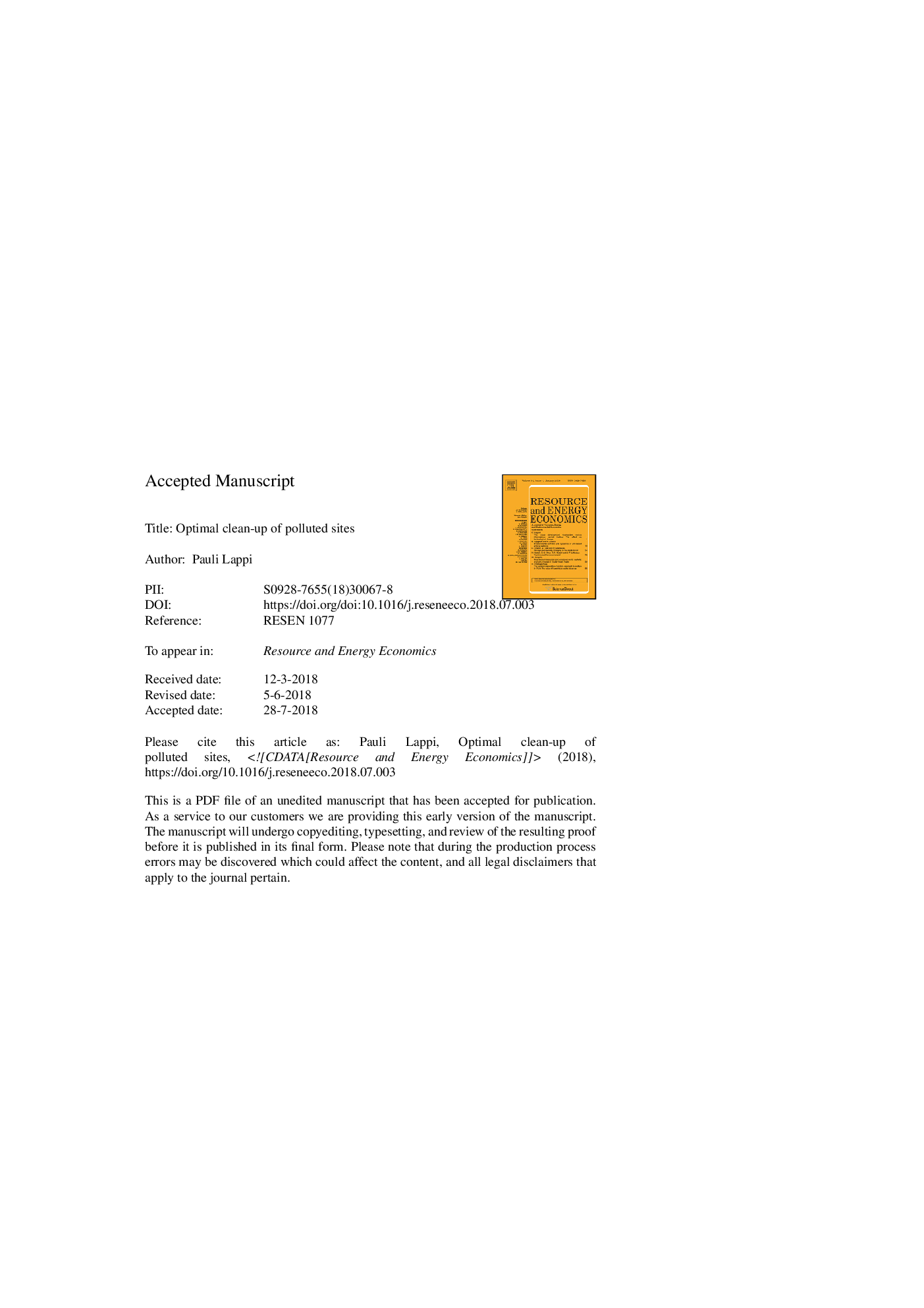| کد مقاله | کد نشریه | سال انتشار | مقاله انگلیسی | نسخه تمام متن |
|---|---|---|---|---|
| 9953075 | 1480667 | 2018 | 39 صفحه PDF | دانلود رایگان |
عنوان انگلیسی مقاله ISI
Optimal clean-up of polluted sites
ترجمه فارسی عنوان
پاکسازی بهینه از سایت های آلوده
دانلود مقاله + سفارش ترجمه
دانلود مقاله ISI انگلیسی
رایگان برای ایرانیان
کلمات کلیدی
ترجمه چکیده
یک فعالیت معمول از سازمان های سیاست زیست محیطی، تمیز کردن سایت های آلوده است. این مطالعه با استفاده از یک مدل ساده برای تجزیه و تحلیل زمان بهینه از تمیز کردن، اندازه آنها و نظم مطلوب برای تمیز کردن سایت ها. یک قانون پیش بینی مشتق شده است، که به این معنی است که عموما مطلوب نیست که یک سایت را بلافاصله پاک کند، اما تاخیر تمیز کردن، و این اطلاعات صرفا بر اثر آلودگی و هزینه های تمیز کردن برای تصمیم گیری در مورد نظافت بهینه مطلوب نیست. نتایج به دست آمده در زمینه تولید منابع انبساطی، میراث معدنی، انسداد زباله های رادیواکتیو و توسعه تولید ناخالص داخلی مورد بحث قرار گرفته است. به عنوان مثال، نتایج نشان می دهد که اگر مطلوب تأخیر در تمیز کردن باشد، ذخیره سازی مطلوب توسط تولید کننده منابع انقباضی به صندوق توانبخشی، به طور معکوس مربوط به سطح آلودگی اولیه سایت خواهد شد و کمتر از هزینه توانبخشی.
موضوعات مرتبط
مهندسی و علوم پایه
مهندسی انرژی
انرژی (عمومی)
چکیده انگلیسی
A typical activity of environmental policy agencies is to clean-up polluted sites. This study uses a simple model to analyze the optimal timing of the clean-ups, their size and the optimal order to clean the sites. A waiting rule is derived, which implies that it is generally not optimal to clean a site immediately but to delay the cleaning, and that information solely on the pollution damages and clean-up costs is not sufficient to decide the optimal clean-up order. The results are discussed in the context of exhaustible resource production, mining legacy, radioactive waste containment and brownfield development. For example, the results indicate that if it is optimal to delay the clean-up, the optimal deposit by the exhaustible resource producer to the rehabilitation fund will be inversely related to the initial pollution level of the site and will be less than the cost of rehabilitation.
ناشر
Database: Elsevier - ScienceDirect (ساینس دایرکت)
Journal: Resource and Energy Economics - Volume 54, November 2018, Pages 53-68
Journal: Resource and Energy Economics - Volume 54, November 2018, Pages 53-68
نویسندگان
Pauli Lappi,
